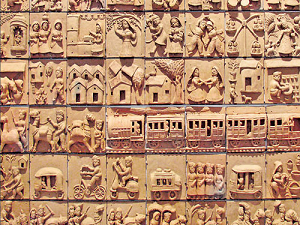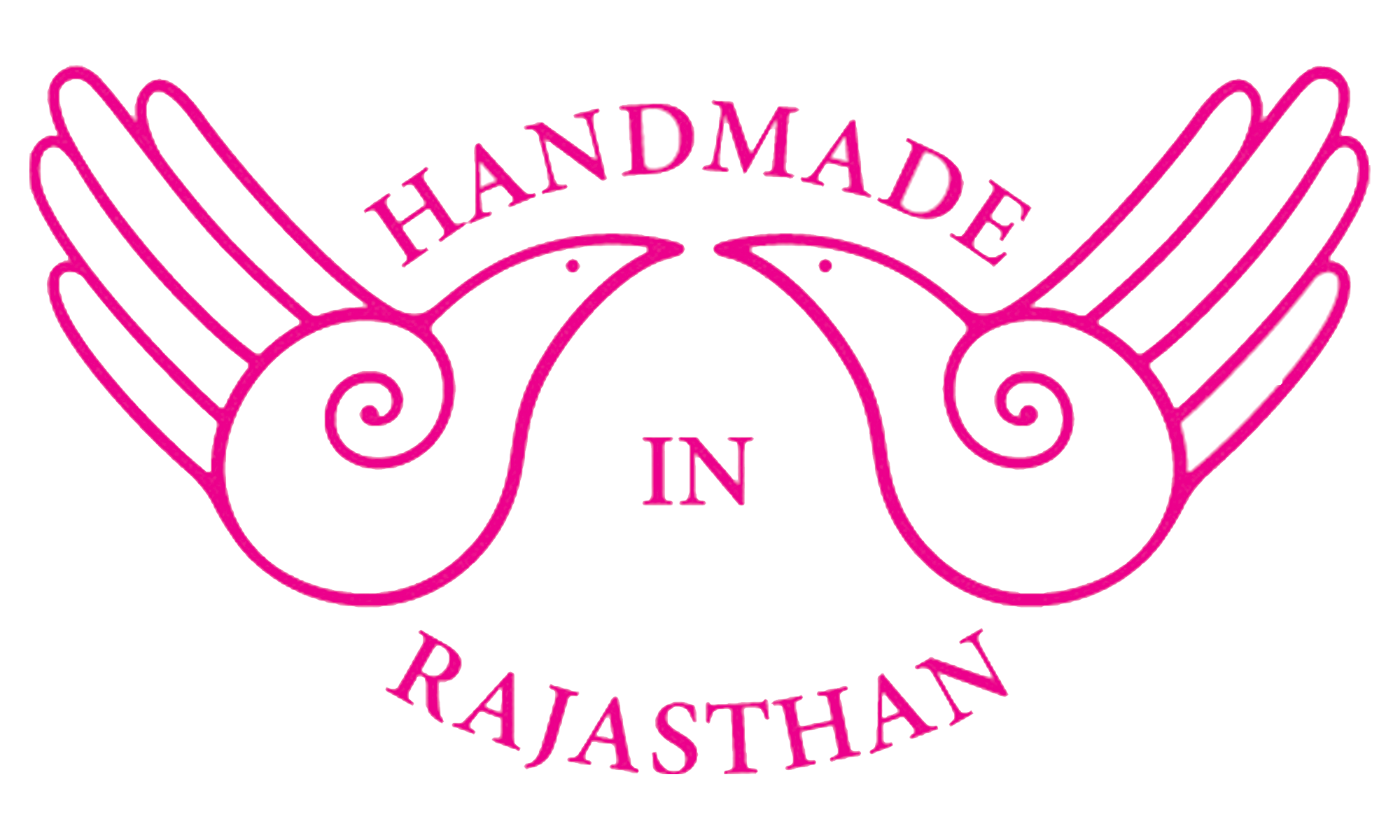- Home
- About US
- Art and Craft
- Artisans
- Master Crafts Persons
- Supporting Institutions
- News and Events
- Schemes
- Contact us
- Contact

Mollela- Murtikala, the art of making votive murtis or idols of gods with terracotta, exists in Molela, in Rajasthan. While the murtis were originally standing idols of local deitiesand various Vishnu forms, today the murtis are often mounted on tiles or plaques and are hung from the walls of temples and homes. These murtis can be multicoloured or can have a terracotta hue, as can be seen in various temples in Rajasthan and Gujarat. While the potters of Molela are known for votive murtis, and also procure their livelihood from these, they also depict scenes that express what the artisan can see in his/her surroundings on plaques.
Like most crafts, murtikala has been passed from generation to generation, through the sons of the family, evolving with each generation. Typically the women do the hard work of getting the clay ready while the men make the murtis and decorate them.
'The red clay of village Molela in Rajasthan is special --- for murtis made of clay from other villages and by other families break easily'. It is to be found on the banks of the nearby talaab. Rice husk and donkey dung are added to this clay for strengthening and as temper. The rice harvest coincides winter, the busiest time for making murtis, for the hot summer sun is too harsh and often cracks the clay murtis. Once the clay has been kneaded, work can begin. The entire process is done by hand without using the mould. The slabs or tiles are made first, with the help of a pindi, which is used for pounding and flattening the clay. A pindi is made of rounded stone with a groove at the top for holding it. The clay slab is then smoothened using a small flat piece of wood, about 1 foot by half a foot and approximately 1 inch thick. The scene to be depicted or the idol or murti to be made is then fashioned on the tile. Often small, round kalash are made on the wheel and added to the murti. The design and the line work on the clay is done with the badli --- a small flat chisel-like instrument made of metal. Both ends of the baldi are used, one end for drawing lines and patterns on the clay, and the other end for making holes. 'The clay is a living thing', says Khemraj Kumhar, adding that 'what final shape it takes is not known before hand --- not even to the potter who moulds it'.
The murtis are allowed to dry before they are considered ready for firing. If the final colour of the murti is terracotta, the red geru is mixed with glue and is used to cover the murti before the firing. Firing could happen as often as once a month or once in six months, depending on the season and the orders. The murtis are made to stand in an open kiln, which is covered with pieces of broken pottery, to which wood is added slowly to keep the temperature constant. The artisan knows that the right temperature has been reached by the height of the flames. After the firing, bright watercolours are used to decorate the freshly baked murtis.
The craftspersons take orders at home and also display their wares there. Once sold, the murtis are carried away by the buyer on his head, in reverence to Gods. Payment for these murtis is usually made in the form of money, cloth, grain, and other offerings depending on the custom of the temple of the buyer. Intricacy of work and size together determine the price of the murtis.
The demand for a potters' work tends to be seasonal --- new vessels and votive murtis are needed at festival and harvest times. The craftspersons turn to agriculture to sustain themselves in the lean months.

